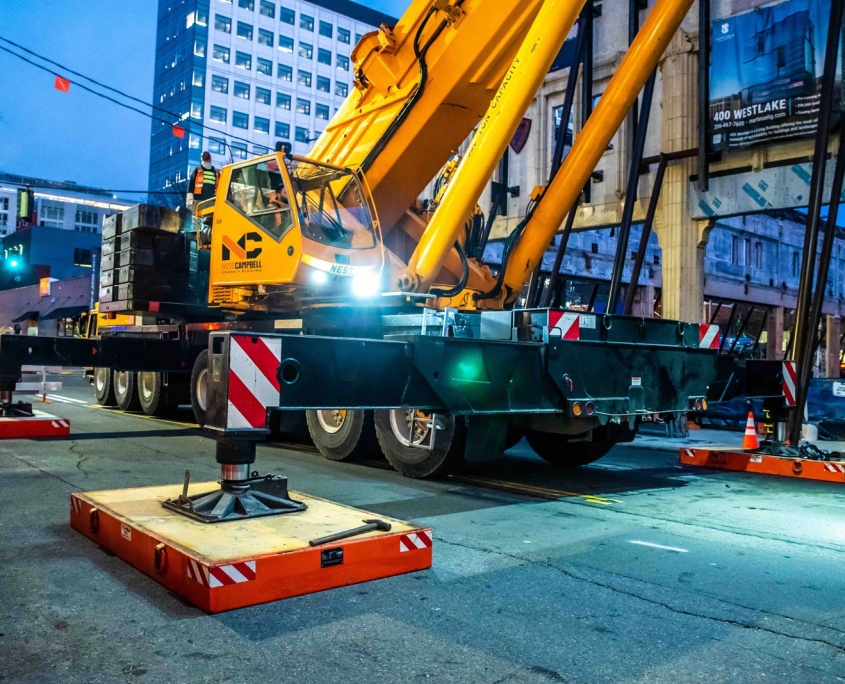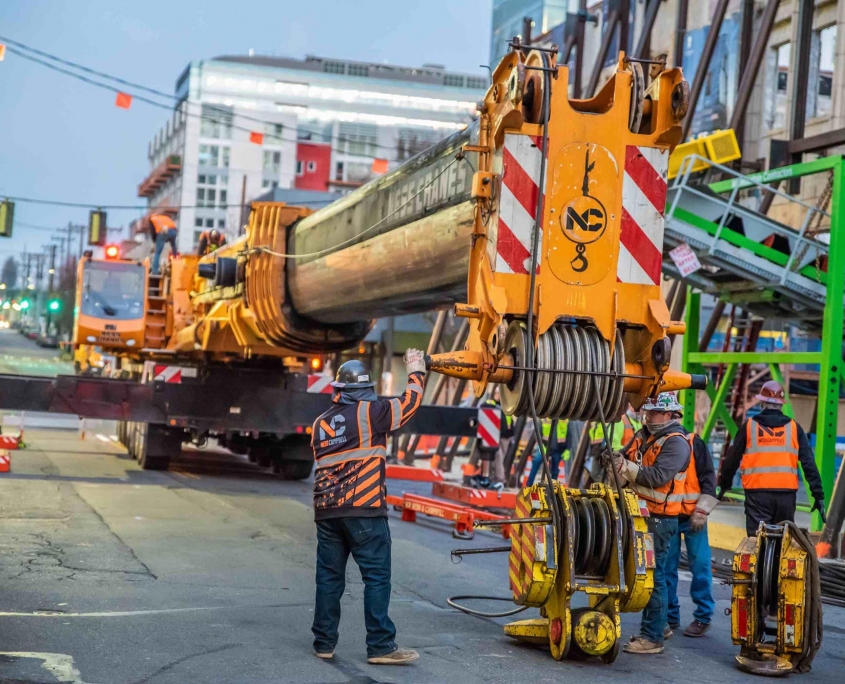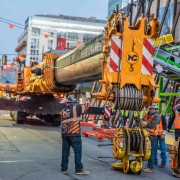Using FiberMax Crane Pads Simplifies Lift Planning for NessCampbell Crane + Rigging
As standard practice, NessCampbell Crane + Rigging utilizes crane pads or steel mats for every job that requires spreading ground bearing pressures over a larger area. In 2019 the company began using FiberMax® Mega Duty Crane Pads with its 550-ton Grove GMK 7550 all-terrain crane.
On a recent project in Seattle, Wash., NessCampbell was hired to hoist a mass excavation conveyor weighing 50,000 lbs. The one-day job required the GMK 7550 to make the pick. The crane was setup on existing asphalt with an allowable ground bearing pressure of 6 KSF. The load and crane configuration imposed a maximum of 221,000 pounds of outrigger reaction force on the outriggers. Based on the reaction force and allowable ground bearing pressure, the minimum area required to spread the load was 37 square feet.

One of the benefits of using engineered load distribution products like FiberMax is quantifiable, consistent performance.
“Setup is dependent on the ground conditions,” said Drew Allemandi, Corporate Engineer. In some cases, NessCampbell will setup on a combination of steel plate and crane pads, but for this conveyor lift, the FiberMax Crane Pads alone were more than sufficient.
One of the benefits of using engineered load distribution products like FiberMax is quantifiable, consistent performance. “All FiberMax Crane Pads have a comprehensive Owner’s Manual that provide projected performance graphs, usage guidelines, and technical specifications,” said Kris Koberg, CEO of DICA.
This is critical to NessCampbell’s ability to respond to customer requests for pre-lift plans. “Confirming the outrigger loads are the most common request we get from customers, which is directly related to the second most common question we get—ground bearing pressure,” said Allemandi.
Since adding FiberMax Crane Pads to its fleet inventory, Allemandi says lift planning is easier. “Plan prep is simplified due to the supporting documentation stating safe working load for the pads. “Effective bearing length is also simplified since customers have increasingly approved the approach of utilizing the full mat area as the bearing area,” he said.

“Safety for us is more about our company culture than just being a safety program. We believe safety must be proactive, not reactive. Part of that is making sure we put the right people with the right skills in every department,” said Jonelle Anderson, Director of Marketing.
On this job, crane load distribution was fairly straight forward. Instead, the bigger setup concern was working around adjacent structures and obstructions. “On the working side of the lift, an existing building façade was shored to provide support while the new building was constructed. On the opposite side were overhead lines, that were de-energized since minimum clearances could not be achieved.” To mitigate these challenges, Allemandi modelled the job in AutoCAD to verify boom clearance over the façade and to confirm that the crane’s tailswing would not come in contact with the de-energized line.
“Safety for us is more about our company culture than just being a safety program. We believe safety must be proactive, not reactive. Part of that is making sure we put the right people with the right skills in every department,” said Jonelle Anderson, Director of Marketing.



